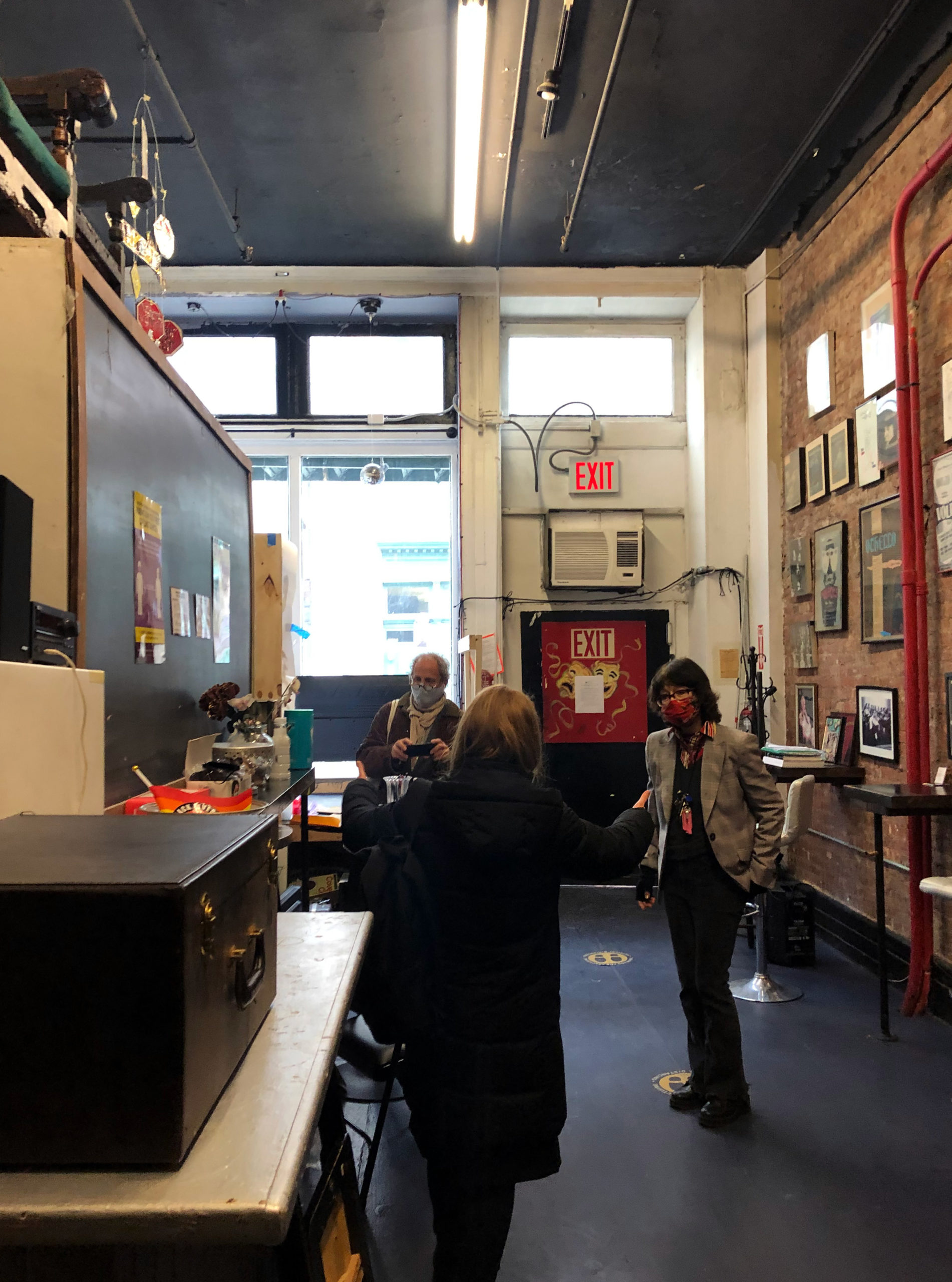
We are excited to continue our Neighborhoods Now initiative with Asian Americans for Equality (AAFE) and Think!Chinatown in Chinatown and Banana Kelly in the South Bronx. Additionally, we expanded our partnership with FABnyc in the Lower East Side. These working groups will reenergize outdoor spaces to support community programming and cultural revitalization.
These next few weeks, we will be rolling out interviews with the representatives of each organization to learn more about their history, some neighborhood insights, and what they hope to achieve through Neighborhoods Now. Check out our feature below with Ryan Gilliam, Executive Director of FABnyc. Marvel, SHoP, and Buro Happold will be helping FABnyc expand their Neighborhoods Now collaboration with four new member organizations: Frankel Theatre, KGB Bar / Red Room, Loisaida Inc., and Performance Space New York. Together they will develop reopening strategies tailored to needs of smaller performing arts organizations, including ways to participate in New York City’s Open Culture program.
Tell us a little bit about your organization.
Ryan Gilliam: FABnyc began as a coalition of arts and community organizations on East 4th Street working together to stay in a handful of city buildings which we’d fixed up over several decades. With broad community support, we were successful in stopping them from going to auction and instead transferred to local groups, establishing the East 4th Street Cultural District, the densest single block of arts activity in NYC. FABnyc’s mission grew and today we focus on the cultural vitality of the entire Lower East Side.
What types of work has your organization been involved in and what are some issues that this community still faces?
RG: The Lower East Side has been struggling with the ongoing impacts of gentrification and displacement. Despite tremendous pressure, residents have organized successfully in ways that have protected affordable housing, supported small businesses, deepened resilience, and preserved the diverse cultural character of the community. FABnyc is a partner to the community, bringing artists and arts practices to creatively collaborate in addressing community issues.
What makes this neighborhood special?
RG: The Lower East Side — which we define by its historic boundaries from 14th Street to Canal, the East River to Chinatown — has a remarkable history as a home to working class and poor immigrants, artists, radicals, and visionaries. The LES has a long history as an inclusive, welcoming place with a creative spirit and commitment to social justice. The murals, bodegas, community gardens, active social service organizations, small theaters, restaurants, political vibrancy, and street life all reflect that character.
What are some neighborhood spots that are most important to people in this community?
RG: Honestly, there are too many to name. We love our open spaces like Tompkins Square, festivals like the Loisaida Festival, hole-in-the-wall bars, tiny restaurants where they know you. We have a lot to mourn that’s been lost to displacement, so we tend to make strong attachments to those who have deep roots here — the theaters of 4th Street, the settlement houses, the entire bustling hub that is Chinatown — but also the people, so many of whom have spoken out, organized, and fought to keep the spirit and connectedness of community alive.
What are you hoping to achieve through this partnership and where are you now in your work with Neighborhoods Now?
RG: We have not only been able to prepare more than a dozen performing arts organizations for re-opening after a year of closure, but we are now working with our design partners to celebrate FABnyc’s 20th year, by imagining the next 20. It’s a unique opportunity to create a real vision of our mission — to imagine ways to support the cultural life of a community while centering that vision in equity, access, and resiliency. We’ve just had our first brainstorm together and are excited for what’s to come.


